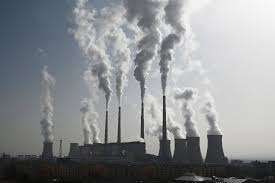
The world's largest consumer of coal, China, increased its imports of coal from Russia in August, surpassing last month's level and reaching their highest level in at least five years as power utilities looked for supplies abroad to meet soaring demand during the extremely hot weather.
Data from the General Administration of Customs showed on Tuesday that arrivals of Russian coal last month totalled 8.54 million tonnes, up from the previous peak of 7.42 million tonnes in July and 57 per cent higher than during the same period last year.
Since comparable statistics started in 2017, the monthly figure was the highest.
As Europe stopped buying from Russia after it sent tens of thousands of troops into Ukraine, forcing Russian coal to be traded at a significant discount, imports from Russia have increased recently.
According to traders, prices for Russian coal increased as both China and India increased their purchases, but the country's domestic coal remained more affordable.
In late August, the price of Russian thermal coal with a 5,500 kcal energy content on a delivery basis to China increased to about $155 per tonne from about $150 per tonne the previous month.
Coal-fired power plants ramped up production as a severe drought and heatwave hit western and southern China starting in late July to address the surge in demand for air conditioning and the supply gap from hydropower.
To increase the effectiveness of electricity production, they also increased their purchases of higher quality thermal coal, such as Russian coal.
According to data, China imported 15.82 million tonnes of the unclean fuel from its top supplier Indonesia in August, a 35 per cent increase from July.
Still, it was less than the 17.3 million tonnes imported in August of the previous year.
As utilities placed more orders as a result of attractive prices, Indonesian coal purchases increased. In August, 3,800 kcal thermal coal from Indonesia cost about 170 yuan ($24.26) less per tonne than coal of equal quality from China, and 4,700 kcal coal cost 140 yuan less.
In order to replenish their inventories before the start of the heating season in the majority of northern China in mid-November, power utilities are anticipated to increase imports in October.
However, as the value of the renminbi falls, imported coal will cost more to Chinese consumers, potentially reducing demand.
(Source:www.cnbc.com)
Data from the General Administration of Customs showed on Tuesday that arrivals of Russian coal last month totalled 8.54 million tonnes, up from the previous peak of 7.42 million tonnes in July and 57 per cent higher than during the same period last year.
Since comparable statistics started in 2017, the monthly figure was the highest.
As Europe stopped buying from Russia after it sent tens of thousands of troops into Ukraine, forcing Russian coal to be traded at a significant discount, imports from Russia have increased recently.
According to traders, prices for Russian coal increased as both China and India increased their purchases, but the country's domestic coal remained more affordable.
In late August, the price of Russian thermal coal with a 5,500 kcal energy content on a delivery basis to China increased to about $155 per tonne from about $150 per tonne the previous month.
Coal-fired power plants ramped up production as a severe drought and heatwave hit western and southern China starting in late July to address the surge in demand for air conditioning and the supply gap from hydropower.
To increase the effectiveness of electricity production, they also increased their purchases of higher quality thermal coal, such as Russian coal.
According to data, China imported 15.82 million tonnes of the unclean fuel from its top supplier Indonesia in August, a 35 per cent increase from July.
Still, it was less than the 17.3 million tonnes imported in August of the previous year.
As utilities placed more orders as a result of attractive prices, Indonesian coal purchases increased. In August, 3,800 kcal thermal coal from Indonesia cost about 170 yuan ($24.26) less per tonne than coal of equal quality from China, and 4,700 kcal coal cost 140 yuan less.
In order to replenish their inventories before the start of the heating season in the majority of northern China in mid-November, power utilities are anticipated to increase imports in October.
However, as the value of the renminbi falls, imported coal will cost more to Chinese consumers, potentially reducing demand.
(Source:www.cnbc.com)














